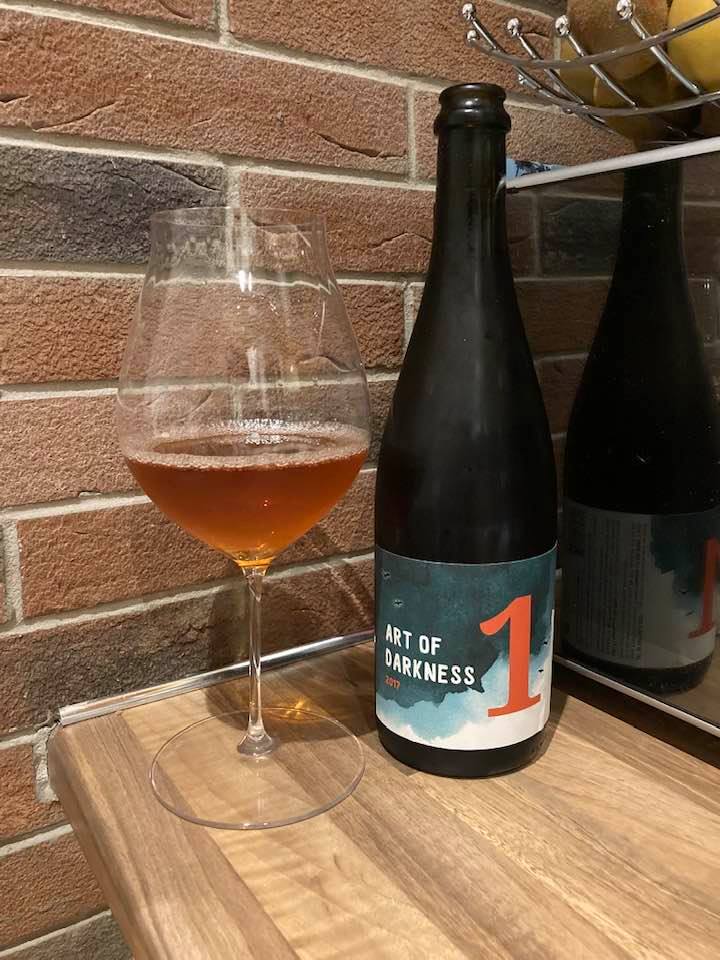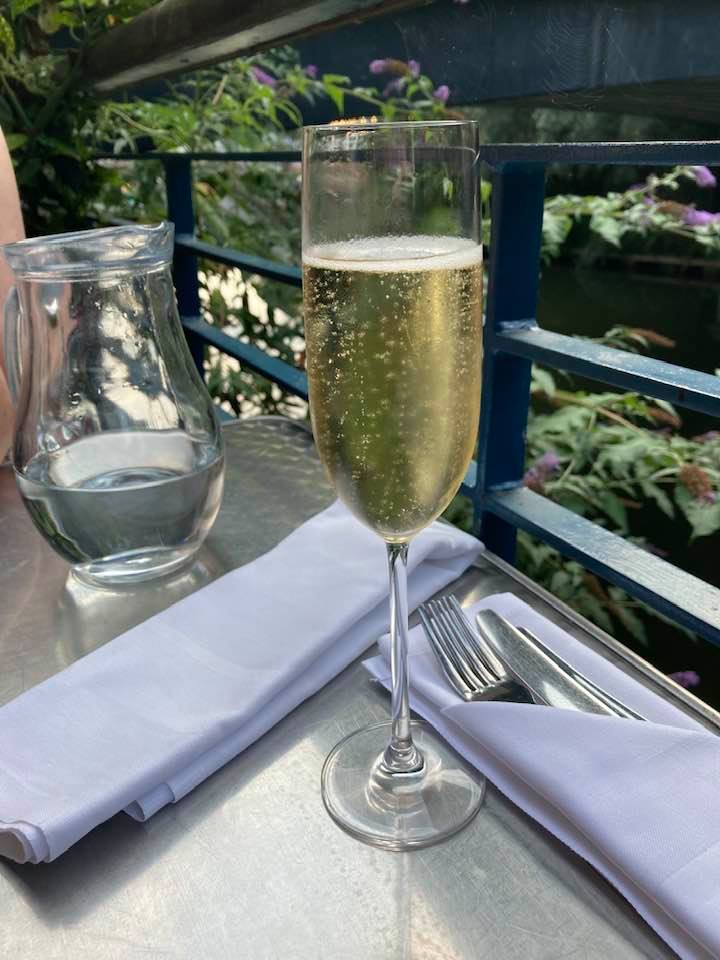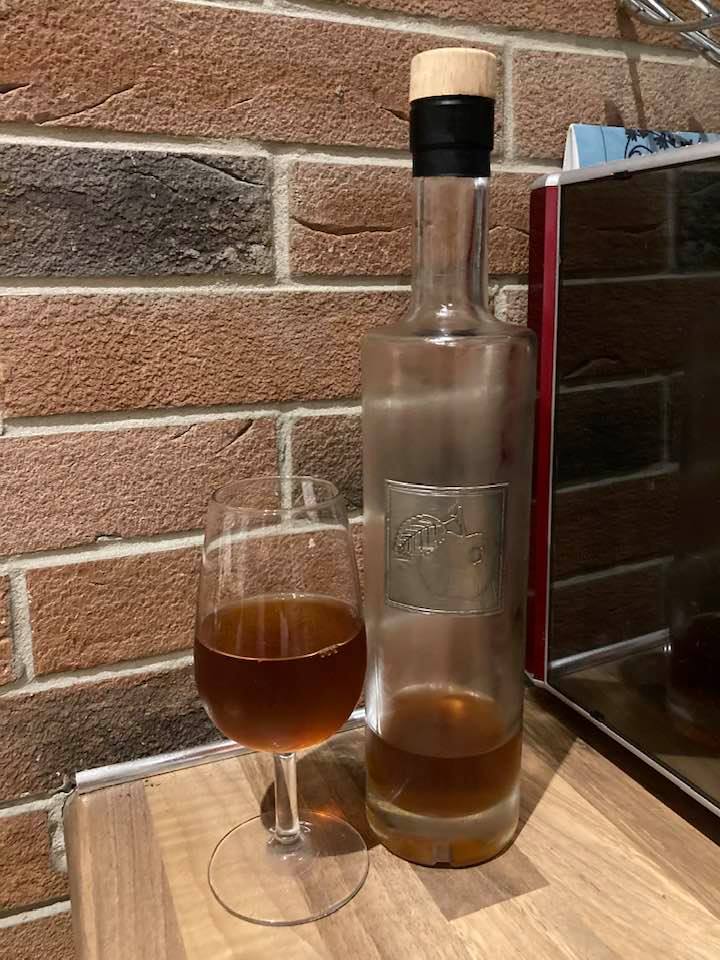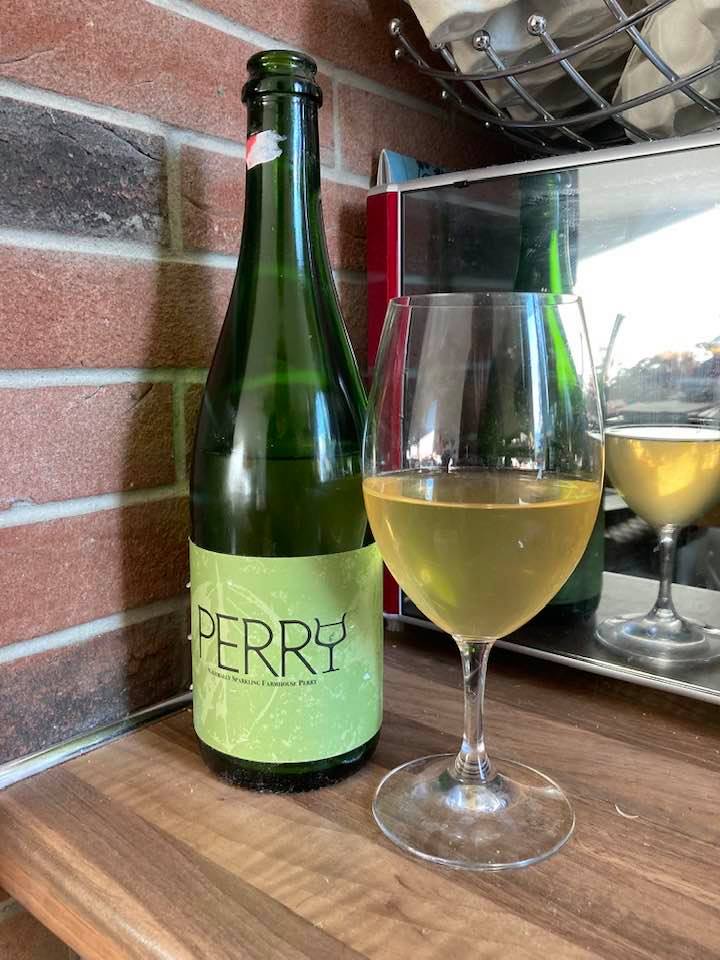I’m not really an “objects” sort of person. Until I moved in with Caroline two years ago mine had been a fairly peripatetic existence as an adult – Merseyside to Inverness to Dundee to Bristol to Reading via a succession of small rented rooms that wouldn’t have allowed much space for extra life-baggage even if I’d been minded to start assembling any. The non-essential chunk of my income has always been rubber-stamped for bottles and books, and historically they’ve made up the 75% of my packing that isn’t clothes. Caroline, being a much more interested (and interesting) person than me had filled her flat with curios, instruments, plant pots, picture frames, unsettling dolls and other sundry trip-hazards long before I moved in, and what space was left over has been commandeered by the cat for scratching post, toilet, luckless stuffed animal victims and whatever remnant fluffy balls she hasn’t currently managed to secret in parts of the flat we’ve yet to discover. By and large my contributory stuff still drills down neatly to “bottles and books”. And glasses.
I love glasses. I think they’re absolutely fascinating. I think the way they’re made is fascinating – sand burned into molten liquid, blown into shape and cooled into these beautiful, clear, many-formed things that we actually drink our drinks out of. I can goggle at glassware far longer than I can at shiny metal or twinkly stones; a wine glass is of far more interest to me than a watch.
I love the way they feel in your hand and the different ways they feel when they’re filled or partially filled. I love the chunky, robust glasses that feel somehow settled and settling, like a firm but kindly clap on the back. I love (though am frequently terrified by) the gossamer-thin, long-stemmed wine glasses so delicate they feel almost spun, that swish in your hand like a wand. I love swirling brandy balloons, teardrop Glencairns, copas and copitas, straight-sided highball glasses packed with crushed ice and brilliant-hued cocktails, champagne flutes designed literally to make long streams of bubbles (to the detriment of actual smells!). I love the elbows and angles of conical Martini glasses and edgy Tekus and the billowing bowls and bulges of Belgian beer brands. I love the thumb lip in the pint pot I drink water from through the day and the weird and wonkish goldfish bowl thing that I drink whisky from on special occasions and that concentrates smells like a magnifying glass for aroma. I love them all.
A popular subject, among drinks enthusiasts and bored writers, is to consider – often heatedly and with very serious faces – the best glass for any sort of drink. The tumbler – so intrinsically linked to whisky that it features in an emoji – was often laughed to scorn within many of the circles in which I used to digitally move, its straight sides and untampered lip derided as singularly unfit for nosing. And certainly, were I to write a(nother) review of a whisky which I felt might impel a stranger to make a purchase, a tumbler wouldn’t be my personal choice to sample it from. But – and perhaps I’ve just been too long away from the whisky scene – more and more frequently through the long evenings of reading and board games and Netflix binges and throwing things for the cat and, especially, collapsing at the end of the sofa after nine hours of work and three of rehearsal, I find it is comfort that I want most of all, and that what I really want is the heft and weight of an uncomplicated tumbler. And nothing with a stem or a bowl or a tapered lip would, in that moment, deliver the same feeling.
Drinking, besides water, should be about moments of pleasure, and pleasure is inherently to do with feeling, and to that end it’s not a cop-out to say that the matter of glassware is an entirely personal thing – perhaps even more so than the matter of what goes in it. If the sum-total of the pleasure you derive from a drink is greater for the use of a particular glass – be it because of how it feels in your hand, the emotional resonance of a gift or because you believe it to offer the broadest spectrum of a drink’s aromatics then don’t let anyone else tell you that another glass is “better”, least of all someone who does a fair chunk of their drinking at the kitchen table with a notebook and a spittoon, a million miles away from how most drinks are intended to be enjoyed.
All that being said, it is true that different glassware in different shapes can change our perception of different drinks in different ways and for different reasons. And as someone who has drunk cider and perry in everything from a pint pot to a flute to a Frankfurt apfel wein glass, a French wine glass and the cut-off bottom half of a plastic water bottle I thought it might be useful to lay out my rough guide to why I use different glasses at different times, which glasses I use for which ciders, and what I feel I get out of each one.

The pint glass
Most of the cider I have drunk in my life – and virtually all of the cider I have drunk in pubs, restaurants and bars – has been from a pint glass. They are hefty and convivial and, since I don’t tend to drink from pint glasses at home, they come with their own special sense of place and occasion.
Given that its very name derives from the amount of liquid it is able to hold, it’s hardly surprising that a benefit of the pint glass is to do with volume. If I want a longer drink, if I am out with a group of friends (I’m starting to remember being out with groups of friends again now …) a pint glass is what I want. There is a particular ceremony and resonance in their irreverence and simplicity. Compared to some of the glasses on this list, they haven’t existed for all that long, but their ancestors are the flagons and cups and beakers that drinkers have held in their hands for as long as drinks have been held.
Given that volume, I prefer pint glasses for lower alcohol ciders. Indeed if we are to level any criticism at the pint glass it is that its ubiquity in British pubs, and the resultant closeness of its modern association with cider such as is drunk in pubs, is probably one factor in the suspicion surrounding higher alcohol ciders. “I can’t have a pint of that – it’s 8.4%” is a perfectly reasonable thought, but one which leaves ciders that are fully fermented and thus land at 6% or above, in a difficult position, and has certainly led to dilution of even small craft ciders. Much as the pint glass has a firm and fond place in my heart, I do sometimes wonder whether there could be space, on the back bars of the future, for an array of shapes and sizes of cider glass (not just half pints, before someone clever pipes up). Cider, as we know, and will see, is a drink of many faces that can be served in many ways, and it’s a shame that, so often, at the pub, it is reduced to only one. But that’s another matter.
As a footnote, I especially like pint glasses for sparkling ciders for the same reason that I like champagne flutes. Their height shows off bubbles to a fuller effect, and who doesn’t enjoy the sight of a long stream of golden bubbles rising through a glass of cider?

The gerippte
The glass that inspired a building! The apfel wein glass (gerripte), above, is so closely associated with Frankfurt that this striking piece of architecture was apparently modelled on one. If you drink cider in Frankfurt – I haven’t, and hope to rectify that soon – it will likely be served in a glass like this. They’re a little smaller than the pint glass, but then apfel wein is often a good bit stronger than the ciders we’re more likely to find on draught here in the UK, so as far as I’m concerned, that’s all to the good.
I bought a pair a few months back and have used them relentlessly (when Caroline hasn’t nicked them to drink water out of). They have that all-important heft, that sense of “relax, you don’t have to review this” (a niche sense, granted) and their smaller size combined with their shape and weight gives me the vibes of a pint glass with the permission to pour a higher strength drink into it. I also love the diamond pattern on the side. You can buy one here, if interested, for £2.56 and I thoroughly recommend them. They are also more robust and easier to wash up than many of the glasses below, which earns them an extra special place in my heart and cupboard.

The txotx glass
Honestly not a glass I use very often, for two reasons. Firstly I fear that if I give it so much as a firm look it will explode into a trillion tiny glass splinters. Secondly it is a rare example of a glass specifically engineered for one particular category of cider, to which I don’t have regular access. But if I do happen to be drinking classic dry Basque or Asturian cider, this would be what I would use.
Looking like a dumpy, wide mouthed pint glass but made from the most delicately thin glass imaginable, the point of this glass is to catch small amounts of cider either fired from a barrel or poured from a height, where the spattering impact of liquid splashing into the glass will render it aerated and ever so lightly carbonated. You gulp it down, you repeat. It is tremendous fun and you can read about it more in my article on visiting Basque cider houses here.
The Asturian hand pour is delivered at full, dramatic arm’s length. But the more moderate Basque approach, expertly displayed above by Caroline, is an ample sufficiency for the job. (And you will make much less mess when you try it at home).

The wine glass
I can already hear the angered howls at that outrageously broad definition. “What wine glass?” “Who made it?” “What sort of wine?”
So, speaking as broadly as possible here, I’m going to steal the stipulations described by Jancis Robinson in her explanation of what she was looking for in her own range of glassware:
“A stem that is tall enough to allow even the big-handed to swirl comfortably without affecting the temperature of the wine, but thick enough to preclude easy breakage, and short enough to fit easily into a dishwasher and on a shelf in a normal domestic cupboard.
A generous bowl going in towards the rim that captures the all-important aroma and allows energetic swirling to encourage it with no danger of losing any wine over the rim, but is not so wide as to make storage difficult, or measures of wine look mean.
An opening at the top that is big enough for the big-nosed but not so big that spillage would be a problem.
A capacity that yields maximum surface area with an average pour of about 125 ml.”
Granted, there are a few actual wine glasses that would certainly slip through the cracks of that definition, but it’s close enough for government work, as they say. (Though “close enough for government work”, if we are talking about our current government, probably now translates as “whatever the f*** you reckon you can get away with” – but that’s an aside).
In the main, we’re talking stemmed, with a rounded bowl and sides that taper towards the rim. What we’re after is the sense of elegance as well as a heightened importance on aromatics and appreciation (you know what I mean) of the actual liquid. These are glasses you use for smaller volumes – though larger than for fortifieds or spirits, we’ll get to those – when you are perhaps taking more time between sips, when what you are sipping is more potent of alcohol, and when, if you are like me, you want to spend a good portion of the experience sniffing rather than actually sipping.
This is where the bowl and the tapered rim are important, as they will combine to trap the aromas and give a sense of magnification. They also play an important role in making you feel very fancy indeed. For reasons which I don’t fully understand (I dare say science is involved somewhere) but which my personal experience does seem to bear out, it also seems to help if the glass is rather more delicate than that used for the pint glass or the gerippte above.
I would use these glasses if I was serving cider with food I had put more than usual work into, if there was a special occasion, if I was drinking something higher-strength (let’s say anywhere 6.5% or above) or if I was opening a special bottle. But a good wine glass will work its aroma and fanciness-enhancing magic on anything.
Because I am a hopeless case, I bought myself the absurd glass pictured above as a stupid treat, but that’s a cartoonish extreme to which there is no need to submit yourself. There are far more sensible, excellent wine glasses which will perform all the roles above without turning washing up into a hair-raising game of operation. With the added benefit that other people will continue to respect you.

The teku
This has become my go-to glass. If I could only drink from one glass for the rest of my life, I would want it to be a teku. It has all the aroma-amplifying qualities of a wine glass, and the safe, robust, comforting, usable and dishwasher-safe feel of a pint glass or Gerripte. (If only I had a dishwasher – one day). I do all my reviewing from a teku these days, and when I’m sitting back afterwards with a glass I don’t have to spit away, it is generally with a teku that I continue. (And not just to save on washing up).
So fond have I become of this angular creature that I have even found myself, when lazy and especially when I want a less hair-raising washing up experience, using it for wine. And have found no real drop-off in my organoleptic experience because of it.
It probably wouldn’t be what I’d put out if I had people coming over or was cooking adventurously, but that is more than partially just my own inbuilt snobbishness on an aesthetic front. The teku combines a fantastic surface area and good swirling stem with the reassuring sense that I’m allowed to fill it to the top if I want to, and that people who judge me for doing so Are Wrong. And for all of those things, I love it.
The stemless wine glass
Because sometimes life demands that you drink in the bath, and I will be taking no further questions at this time.

The flute
Possibly more than any other drinking vessel in the world, the flute is about affecting how you feel. It is actually, so far as getting the most out of a drink’s aromas and flavours goes, not great. It’s thin, doesn’t offer much surface area, you can’t get your nose into them and would look silly trying. But when it comes to celebrations, flutes conjure feelings of joie de vivre, special occasion and general merriment on a level that no other glass can match.
What’s more, they do so in a more-or-less universal language. Pretty much whoever you are, whatever your social and financial situation, whether or not you’re a drinks professional or hobbyist, if you are given something in a flute, you know that, whatever the drink inside it might be, it is intended as a special moment. Wedding receptions, graduations, Christmas bucks fizz, birthdays and office leaving dos. Flutes say “occasion”; they mark important moments in life and they can give otherwise unimportant moments a glow that they might not otherwise have had.
Of course flutes are synonymous with sparkling wine, so I would predominantly use them for traditional method, charmat method or pét nat cider. They are designed to give you the most exaggerated visual bubble action – the little rush of serotonin that greets the little rush of fizz. And they do that splendidly. But really, when it comes to the flute, the actual drink that you pour into it matters less than the moment you pour it for.
If you’re after smelling the cider as fully as possible, after enjoying it in the sort of glass that suits the flavours and aromatics of the cider best, you’re better off with the wine glass or a teku. But if you want the celebration, the atmosphere, the moment, the feeling, nothing will beat the flute.

The copita
Copitas are the classic sherry glass which have since also found fond following among whisky wonks such as myself. Effectively they are a baby version of our wine glass – stem, bowl, tapered rim – designed for smaller quantities of higher strength liquid. So, in cider currency, we’re talking Pommeau – or any of its equivalents from outside Normandy, such as this or these – and apple brandy. They’re also excellent for dessert drinks such as ice cider that you may only want a small measure of.
As with the wine glass there is a focus on elegance and on the swirlability afforded by the stem and the (comparatively) wide bowl. (Personally I’m not a fan of swirling spirits, but that’s a whole other debate that I will not be drawn into here). An additional advantage here, if you are drinking apple brandy, is that the stem and smaller bowl allow you to clasp the whole bowl in your hands, naturally warming the spirit and thereby increasing the volatility of its aromas and conjuring more delicious smells in the process which, as attested above, will linger in your glass longer as a result of that tapered lip. (N.B. This is just for spirits. I prefer my Pommeau at either room temperature or, in the case of younger, fruit-driven Pommeau, lightly chilled. So I wouldn’t warm that in my hands.)
If you have clicked on any of the links you will see that what I have poured my various Pommeaux and fortified ciders into is not, in fact, a Copita, but is the glass I rudely referred to in paragraph three as a “weird and wonkish goldfish bowl thing”. In fact, ridiculous as it looks, it is my absolute favourite glass in the world, modelled on the glasses used by whisky blenders in the 1920s, and is better at amplifying aromas than any other glass I have ever come across. Whilst it’s too small, too delicate and too impractical for pretty much any drink besides spirits and fortifieds, as a piece of specialist glassware it is, in my opinion, without equal. If you are as pretentious as me and wish to spoil yourself, you can pick one up here. But don’t feel you need to – a normal copita, as pictured above, is more than fine.
The cut-off bottom of a plastic bottle
Necessity, as we are often told, is the mother of invention. Every so often in life you will find yourself with something good to drink, but nothing to drink it from. Now you could, of course, swig straight from the bottle, and do so with my blessing. But if you are a person like me, with sniffy-sippy sensibilities that are hard-engrained and difficult to overcome, it may be a comfort to know that you can cut off the bottom of a plastic bottle and find yourself with a perfectly serviceable drinking vessel.
In my own experience, should you have an array to choose from, the 750ml Buxton mineral water bottle offers particularly admirable service in this regard, as if you cut it just above the middle you will have a veritable goblet with the wide bowl and tapered rim of which I have spoken with such affection. It did me proud recently when, after the run of an outdoor Shakespeare, I found myself sitting in Reading Abbey Ruins with a Raison d’Être 2018 and a distinct shortage of glassware. Then again, if you find yourself butchering bottles of mineral water for something you want to drink out of, you may not have the luxury of choice.


I do love a good glass!
I recently picked up a Teku and it’s quickly become my go to glass. I do wish it had a shorter stem some times though (I’m a sucker for a stemless wine glass too).
LikeLike
I love my Teku too (Thanks Andrew for pointing me in the right direction!)
Other than it’s generally a stemless wine glass or my Little Pomona glass.
LikeLiked by 1 person
Hi Gavin
I use my LP glasses a fair bit too. Swapped them back for the Teku a bit when I realised the cat wasn’t a glasses threat! But they’re still some of my most regular.
Cheers as ever!
Adam
LikeLike